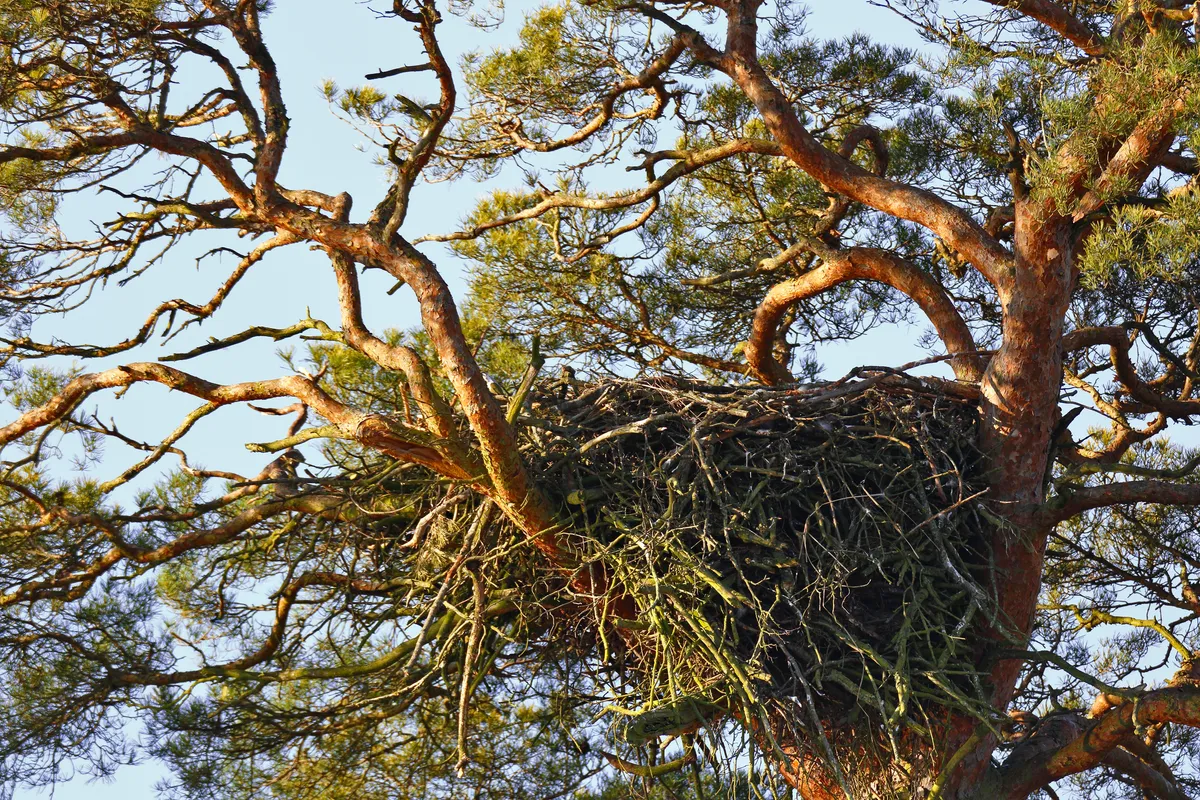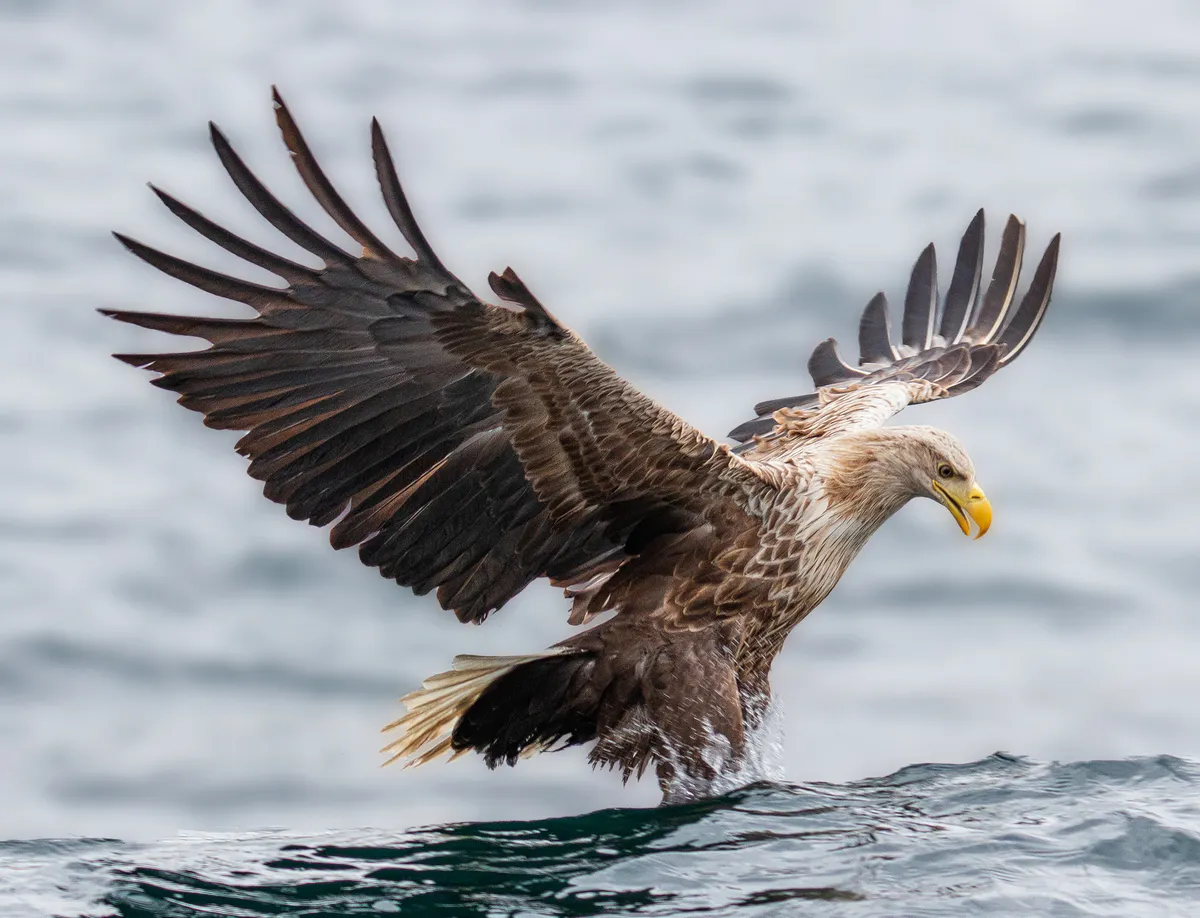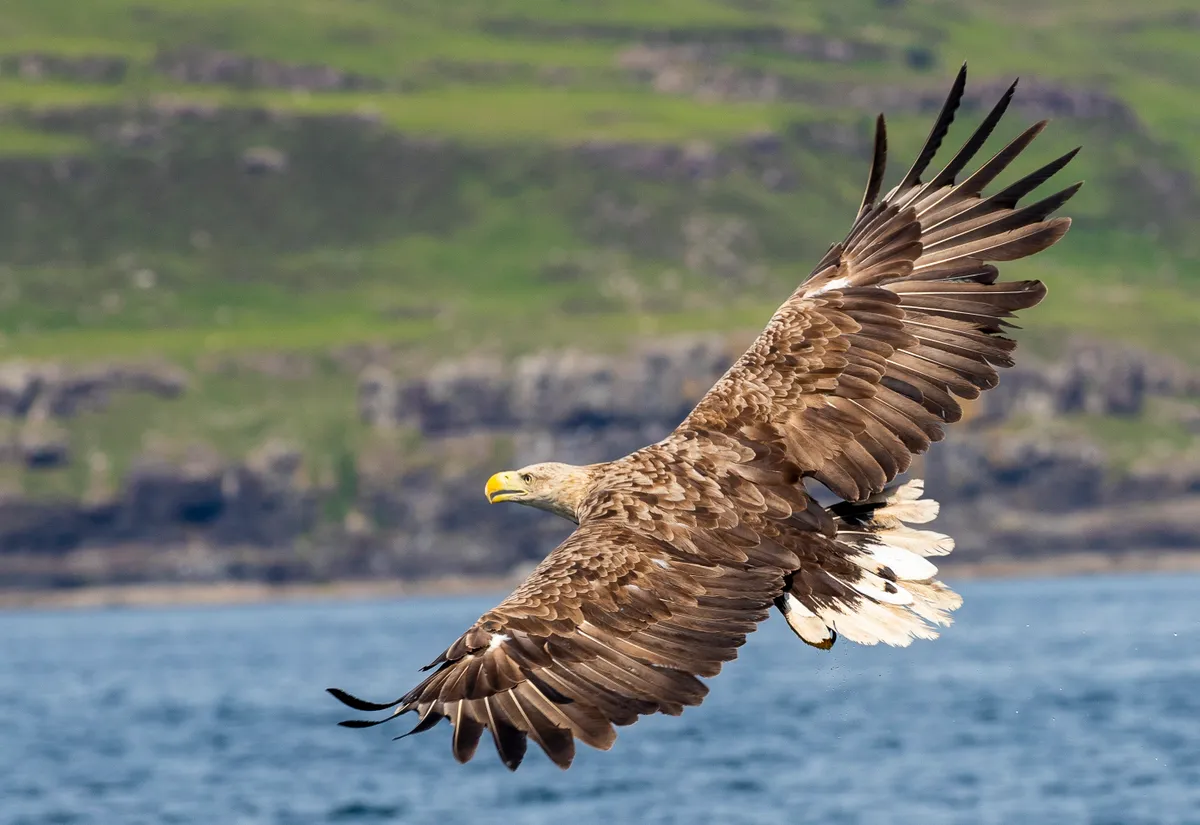Anyone under 30 may find it hard to believe that red kites – reintroduced to England in the 1990s and now so common over Reading and the M40 and M4 corridor that people barely give them a second glance – were once about to disappear from Britain.
Could white-tailed eagles, reintroduced to Scotland in the 1980s and recently returned to the Isle of Wight after a 240-year absence in England, soar to equally spectacular heights?
“Why not?” says Tim Mackrill, a quietly confident raptor specialist who works for the Roy Dennis Wildlife Foundation. “These birds belong here, cheek by jowl, right among us.”
Together with Forestry England, the foundation is leading an ambitious project to repopulate southern England with the huge eagles – Europe's largest, with a wingspan of up to 2.4m. Also known as sea eagles, their nickname with birders is ‘flying barn doors.’
What is the scientific name of the white-tailed eagle?
The scientific name of the white-tailed eagle is Haliaeetus albicilla.
The Haliaeetus genus consists of ten extant (living) species of eagle, including the bald eagle (Haliaeetus leucocephalus) and the Stellar's sea eagle (Haliaeetus pelagicus).
How big are white-tailed eagles?
The white-tailed eagle is the UK's and Europe's largest bird of prey, with a length between 70-90cm, and a wingspan between 200-240cm.
Adult males can weight between 3.5-5kg, and females between 4-7kg.
How many white-tailed eagles are there in the UK?
A 2020 estimate put the number of breeding pairs at 150. This does not include juveniles and non-breeding adults.
Population growth models suggest that there could be over 200 breeding pairs by 2025.
Please note that external videos may contain ads:
White Tailed Eagle | Big 5: Scotland| BBC Earth Kids
When do white-tailed eagles breed?
White-tailed eagles being breeding from five to six years old, forming a monogamous and life-long bonds as a pair. If one of the pair dies, the surviving individual will find a new mate to pair up with.
The female lays two or three eggs in March or April, incubating them until they hatch. The eggs are laid a few days apart, and hatch in order after 38 days. The oldest chick is the dominant one.

The female does most of the incubation and the direct feeding of the young, though the male will occasionally help. The male's main role is to provide the female and the chicks with food.
Three weeks after hatching, the female joins in with hunting. The chicks can feed themselves in the nest when they are between five and six weeks old, and fledge when they are about 10-11 weeks old. They remain dependent on their parents for a further five to six weeks.
Are there any white-tailed eagle livestreams?
If you're not able to go and watch white-tailed eagles in real life, watching them via a livestream is the next best thing! There are a number of white-tailed eagle nest livestreams available:
- Garnish Island, County Cork, Ireland – National Parks and Wildlife Service
- Durbe, Latvia – Latvian Fund for Nature
- Slītere National Park, Latvia – Latvian Fund for Nature
- Smøla, Norway – Streambird Pro (5 cameras)
- Matsalu National Park, Estonia – Kotkaklubi
- Saksfjed-Hyllekrog Nature Reserve, Denmark - Dansk Ornitologisk Forening
- The Netherlands - CJ Wildlife and Beleef de Lente Project, courtesy of Vogelbescherming Nederland
What do white-tailed eagles eat?
In behaviour, white-tailed eagles are generalist raptors.
“They tend to catch fish if they can, but also take wildfowl, shorebirds, small mammals and carrion.” says Tims. This makes them more like North America’s bald eagles than golden eagles – upland specialists that roam vast territories.

“Conservationists in Denmark tell us their white-tailed eagles target sick and injured water birds,” says Tim, “and carrion can make up 30 per cent of the eagles’ diet in Germany. Our own released juveniles have been scavenging for a living, a lot like red kites. It’s what we hoped would happen.”
Where can white-tailed eagles be found?
Following reintroduction, these eagles breed in Scotland’s western Highlands and islands, and along parts of the east coast. As well as to the Isle of Wight, the species has also been reintroduced to south-west Ireland.
Within a few decades, several dozen eagles could be raising young in southern England. If the species spreads its wings, areas ripe for natural colonisation include Cornwall, East Anglia and the Somerset Levels.
Its global range extends through Europe to eastern Asia and Japan.
Across northern, central and eastern Europe today, white-tailed eagles thrive far inland at lakes and along river valleys, nesting in nearby forest.
Did white-tailed eagles go extinct in the UK?
Following the last breeding English pair in 1780 and the extinction in Ireland in 1901, white-tailed eagles became extinct in the British Isles in 1918, when the last Scottish bird was shot in Shetland.
The species had been persecuted for years by gamekeepers, fishery owners and shepherds, and had also suffered from skin and egg collectors.
When were white-tailed eagles reintroduced to Scotland?
There were failed reintroduction attempts at Argyll and Fair Isle between 1959-68, before 82 Norwegian chicks were reintroduced to the Isle of Rum in the Inner Hebrides between 1975-85 by the Nature Conservancy Council (now Nature Scot) and the RSPB.
The first successful breeding after this reintroduction took place in 1985, on the nearby Isle of Mull.
Between 1993-98, further releases took place in Wester Ross, and then between 2007-12, a further 85 Norwegian chicks were reintroduced to Fife, on Scotland's east coast. These additional reintroductions enabled the population to become self-sustaining.
The Scottish population reached 106 breeding pairs, plus juveniles and non-breeding adults in 2015, and in 109, six Scottish chicks were taken of the Isle of Wight in England.
Please note that external videos may contain ads:
Wild Sea Eagle | Deadly 60 | Series 2 | BBC
When were white-tailed eagles reintroduced to the Isle of Wight?
White-tailed eagles were recently returned to the Isle of Wight after a 240-year absence in England.
The Isle of Wight was chosen because the last English white-tailed eagles bred on the island, at Culver Cliff. When occasional eagles wander to the UK from the Netherlands or France, they also often turn up here or in Hampshire. In addition, there is plenty of potential prey; around 180,000 birds winter in the Solent and surrounding estuaries every winter, ensuring plenty of avian carrion.
In June 2019, the first six young birds were taken from healthy Scottish nests, driven overnight to the Isle of Wight, settled in familiarisation pens with minimal contact, then set free in August wearing £1,200 satellite tags.
The team behind the reintroduction adopted tried-and-tested techniques used with both red kites and ospreys – and indeed with white- tailed eagles, which were reintroduced to Scotland’s west coast in 1975–85 after dying out in the Highlands in the early 20th century. All three species had been hammered by persecution.
More on birds of prey:
Convincing sceptical landowners on the Isle of Wight, where there are tens of thousands of sheep and two farms with outdoor turkeys, as well as shooting estates with pheasants and partridges, was always going to be the reintroduction programme’s toughest test.
When Natural England issued the reintroduction licence, it insisted that in the rest of Europe there was no evidence that white-tailed eagles preyed on lambs on lowland sheep farms. Do local farmers now accept this view?
“To be honest, we weren’t won over,” says Matt Legge, who farms on the Isle of Wight and is County Chairman of the National Farmers’ Union. “We were a bit on edge. Still are.”
Matt says farmers are most concerned about what will happen when the eagles reach maturity, at five or six years, and start hunting more proficiently to feed their young. He is reassured, however, that the licence requires any “problem” birds to be recaptured and moved, adding there have been no problems so far.
Matt sits on the reintroduction project’s steering group, and Tim Mackrill and Steve Egerton-Read, the reintroduction project officer, stress the “huge efforts” to engage landowners and the farming community.
In the end, though, the success to date may as much be down to the eagles themselves – specifically, their elusiveness.

For such enormous birds, they have proved adept at melting into the landscape. “I’ve met a couple of landowners who had no idea there was an eagle roosting behind their house,” Steve says. It is astonishing that one of the wider-ranging eagles (known as ‘G3-93’) managed to hunker down, avoid the telescopes and binoculars of Britain’s army of birdwatchers, and live in Oxfordshire for several months virtually unseen.
In early 2020, two of the reintroduced white-tailed eagles were found dead in southern England, with one found in Dorset and the other thought to be in Sussex.
Why are such high numbers of white-tailed eagles being reintroduced?
White-tailed eagles suffer high mortality, so relatively high numbers need to be reintroduced. “If 30–40 per cent of the birds we release reach breeding age, we are doing fairly well,” Tim Mackrill says.
When were white-tailed eagles reintroduced to Ireland?
100 Norwegian white-tailed eagle chicks were reintroduced to County Kerry in Ireland between 2007-11.
When white-tailed eagles were returned to Ireland, after going extinct a century earlier, hostile sheep farmers staged angry demonstrations; since then, more than a dozen Irish birds have died from poisoning.
Main image: White-tailed eagle in flight over the Isle Of Mull, Scotland, UK. © Keith Wood/EyeEm/Getty
